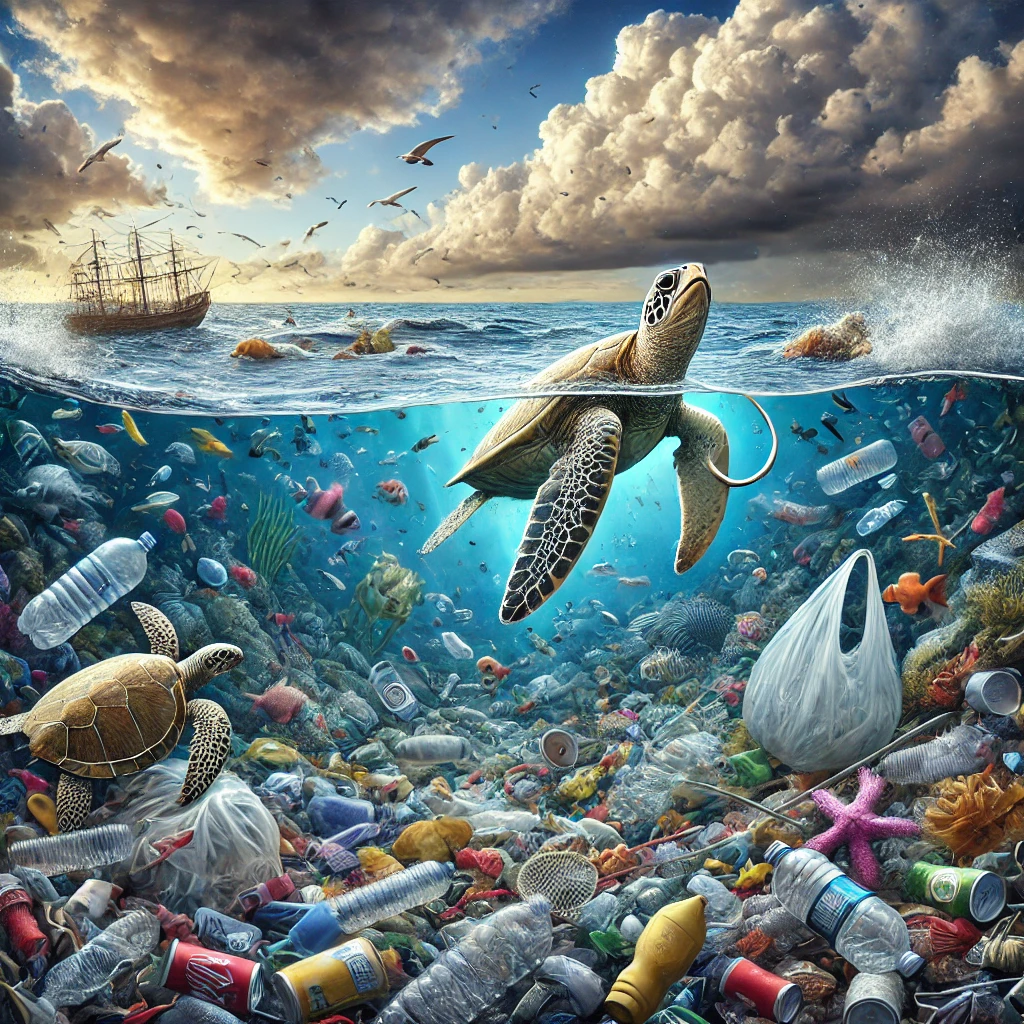Why is plastic pollution a problem?
Article Source: Plastic Pollution in Parks

Why You Should Care
Plastic pollution isn't just an eyesore—it’s a serious environmental issue that affects wildlife, ecosystems, and even human health. With millions of tons of plastic entering our oceans every year, understanding the impact of this pollution is critical for protecting our planet and ensuring a sustainable future.
Answering the Question… Why Is Plastic Pollution a Problem?
Plastic pollution is a growing problem because it doesn't break down easily, taking hundreds of years to decompose. The study found that over 8 million tons of plastic waste end up in the ocean each year, where it harms marine life and disrupts ecosystems. Microplastics, tiny particles that result from the breakdown of larger plastics, are especially dangerous as they can be ingested by animals, entering the food chain and potentially impacting human health.
How Was the Study Done?
Researchers conducted field surveys and analyzed samples from various locations, including parks and coastal areas. They measured the amount of plastic waste, identified its sources, and examined its effects on local wildlife and habitats. The study also reviewed existing data on plastic pollution to provide a comprehensive overview of the issue.
What Was Discovered?
- Scale of Pollution: The study revealed that plastic pollution is widespread, with some areas showing that up to 80% of litter is plastic. This includes everything from everyday items like plastic bags and bottles to more insidious microplastics that are difficult to clean up and are nearly impossible to remove from the environment once they enter it.
- Impact on Wildlife: The study emphasized that over 1 million marine animals, including birds, fish, and sea turtles, die each year due to plastic pollution. These animals often mistake plastic for food. For example, sea turtles may mistake plastic bags for jellyfish, a primary part of their diet, leading to ingestion that can block their digestive systems and cause death.
- Microplastics: The study found that microplastics, tiny plastic particles less than 5 millimeters in diameter, are pervasive in the environment. Shockingly, 94% of tap water samples in the U.S. were found to contain microplastics, indicating that these pollutants have infiltrated even our drinking water. These microplastics have also been detected in 60% of seabird species, demonstrating the extensive reach of plastic pollution.
- Longevity and Persistence: The study highlighted that plastics take hundreds of years to decompose. For instance, a plastic bottle can take up to 450 years to break down completely. This longevity means that the plastic waste generated today will persist in the environment, accumulating over time and posing a long-term threat to ecosystems.
- Human Health Risks: The ingestion of microplastics by marine animals means these particles can enter the human food chain, leading to potential health risks. Studies cited in the article suggest that consuming seafood contaminated with microplastics could expose humans to harmful chemicals, which may lead to endocrine disruption, developmental issues, and other health problems.
- Economic Costs: The study also pointed out the significant economic impacts of plastic pollution. Coastal clean-up efforts cost governments millions of dollars annually. For example, the United States spends an estimated $11 billion each year on litter clean-up efforts, a large portion of which is plastic.
Why Does It Matter?
Understanding the scale and impact of plastic pollution is crucial for taking action to reduce it. By reducing plastic use, improving waste management, and supporting clean-up efforts, we can help protect marine life, preserve natural ecosystems, and safeguard human health. The research emphasizes the need for global cooperation and innovative solutions to address the plastic pollution crisis.
Link to full article: Plastic Pollution in Parks
